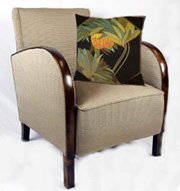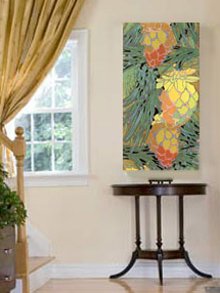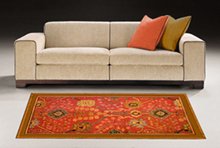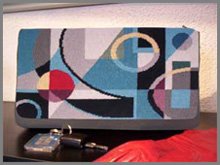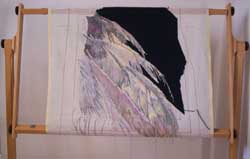PLEASANT STITCHING WITH
THIS NEEDLEPOINT EQUIPMENT !
For or Against Using Frames?
Click hereto share your views or experiences with visitors to this page!
This supplementary needlepoint equipment can make your quiet ‘escape’ time even more pleasant!
A comfortable chair and your favourite music are a good start, but consider the following accessories to help prevent eye strain or an aching back!
NEEDLEPOINT EQUIPMENT:
LIGHTING
Anyone involved professionally in the fine or decorative arts will tell you that the most important element in your working conditions is good lighting .

LAMPS
Seeing the detail when stitching is obviously crucial!
The light fixture you choose is an extremely important item of needlepoint equipment.
You can choose from a small free-standing table lamp that can be angled onto your work. Some can even be clamped to a table, if that is your preference.
Some lamps have a detachable magnification arm (or built-in magnification) which I like, particularly if I’m stitching detailed work in the evening.
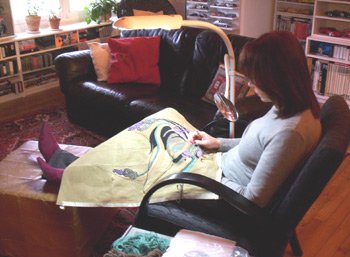
Here I am stitching with my favourite floor lamp which follows me about on castors!
Note the pivotal magnifying glass that is detachable... very handy.
Here I’m working here on an elegant handbag design called 'Dutch Iris', which was inspired by van Gogh's painting, 'Irises.'
Choice of a light fixture is very personal and depends on how much space you have, if you like to stitch in more than one room (like me!), and how much you’re willing to spend.
LIGHT BULBS
One item I highly recommend is a daylight simulation bulb.
You’ll find that close yarn colours will never get mixed up again.
I particularly find this type of bulb to be essential when choosing yarns for a new design.
These bulbs can be found in craft and art shops.
NEEDLEPOINT EQUIPMENT:
FRAMES
There is a lot of discussion about the pros and cons about using a needlepoint frame.
The argument for frames:
•The correct tension is far easier to achieve on flat, stretched canvas.
•It is simpler to see where you are in the design.
•It is easier to count threads.
•The work distorts less.
•A frame will prevent you over-handling the work and keep it cleaner.
•It keeps the shape better for irregularly shaped designs.
The argument against frames:
• One of the beauties and luxuries of needlepoint for me is that I can carry it around to various rooms in the house, or outside in the garden, or take it on trains or holidays, etc... so I like to be frame free!
• Even if it has been worked on a frame and is not distorted, the embroidery will look fresher after blocking anyway. So why have it on a frame?
• An expense that may not be needed
• I love to feel the yarns and canvas in my hands.
MY OBJECTIVE OPINION?
If your stitching tension is even and not too tight and you stretch your canvases afterwards anyway, there is no need for a frame.
However, if you stitch with a tight tension, you should stretch your work on an embroidery frame.
Also, if you canvas is large, like an area rug or seat bench cover, it may be too unweildy to stretch after, so it would be better to work on a frame.
The golden rule is that each stitcher should enjoy the process, so decide which type of frame, if any, is most suitable for you.
WHAT'S YOUR OPINION?
For or Against Using a Needlepoint Frame?
You’ve read both sides of the argument about stitching on a frame or not…. What’s your preference?
Join in the discussion! Share your views or experiences (good or bad!) about needlepoint frames.
What Other Visitors Have Said About Needlepoint Frames
Click on the links below from visitors to this page and read their views about needlepoint frames!
an important tool Not rated yet
I use a frame to keep even tension and to keep the piece clean. I use stretcher bars of several kinds and scroll frames.
CHOOSE YOUR FRAMES AND FRAME STANDS
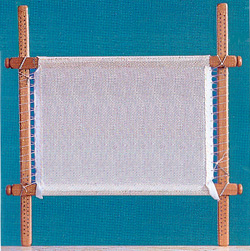
Slate Frames (photo at right)
Slate frames are normally used by professional stitchers.
Very strong and heavy, they can be rested against a table or attached to a floor stand.
The canvas can be pulled very taut.
The top and bottom roller bars have webbing for attaching the canvas.
The two side bars slot into the roller bars, secured by screws or pins.
Scroll Frames
(photo at right)
For most projects the scroll frame is the most advantageous because it is adjustable, making it suitable for canvases of varying sizes.
It comes in a variety of widths, and should be chosen to match the size
of the work you normally do.
This photo shows one of my cushion designs being stitched on a small scroll frame. The top of the stitched canvas is gently ‘scrolled’ up to allow ease of stitching as you progress down the canvas.
Click on photo to learn more about how this Tabriz cushion design was created.
I personally only have two frame sizes:
• the small scroll frame (as shown) for my lap which is wide enough for anything up to cushion or handbag size.
• a larger frame for seat covers and area rugs on a frame stand.
Normally, most frames are reasonably priced and worth the money.
MORE ABOUT FRAME STANDS...
If you put your frame on a stand, it frees both your hands to stitch.
There are both free-standing models and ones that slip under
your knees or clamp to a table.
For my swan wing seat cover design, my client is using a frame on a stand to be sure she can see the entire design when stitching.
It’s such a highly textured design, so the colour consistency is crucial!
Click on photo to learn more about how I created this unusual design for her.
Some of the floor stands can be angled easily to allow you to sit on either a high or low chair which can be very helpful in reducing any strain on your back.
They are normally available in wood or stainless steel. I’ve even seen some rather elegant antique ones that would enhance any home.
But I’m afraid that my needlepoint equipment is much more utilitarian and a lot cheaper!
This needlepoint equipment I’ve described isn’t required if you want to get started in the least expensive way.
However, these needlepoint accessories can allow you to stitch more comfortably and therefore for a longer period of time.
For those of us obsessed with needlepoint, that has to be a big plus!
Click here to read more about frames and other tips on how to start a needlepoint project.
Click here to learn more about finishing your embroidery after you take it off the frame.
Go from this needlepoint equipment page back to Home Page to see the ZIVA Collection designs.
Like This Page?
Translate any page on this site to your language!


NEW!
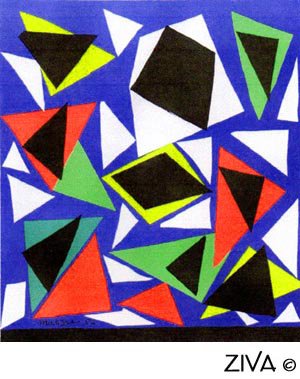
NEW!
'MATISSE TRIANGLES' CUSHION DESIGN

NEW!
FREE ART DECO CELL PHONE OR GLASSES CASE DESIGN

NEW!

NEW!
THREE FREE
ANCIENT CHINESE CUSHION DESIGNS
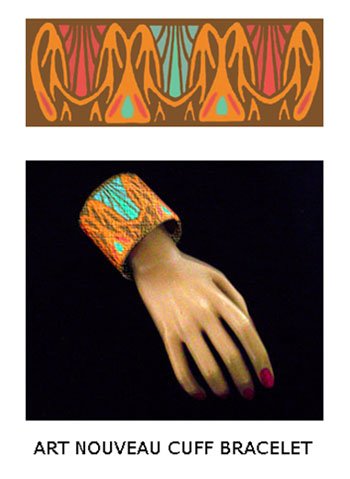
NEW!
THREE FREE
ART NOUVEAU
CUFF BRACELETS DESIGNS

NEW!
TWO PERSIAN
OR

NEW!
GAUDI'S STAINED-GLASS CUSHION DESIGNS

NEW!
ANOTHER MACKINTOSH INSPIRED DESIGN!
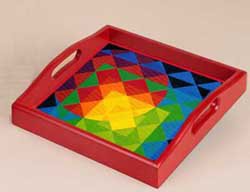
WITH MANY USES...
TRAY, FRAMED, CLUTCH BAG OR CUSHION!
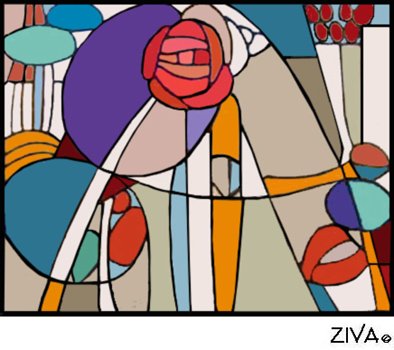
TWO MORE
STAINED-GLASS DESIGNS
FOR CUSHIONS

TWO MORE
JAPANESE DESIGNS
FOR
OR
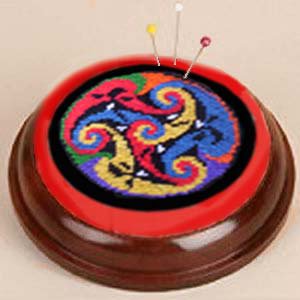
FOR YOUR WRIST OR ON A BASE
YOU CHOOSE!

MORE!

INSPIRED BY A PICASSO PAINTING!
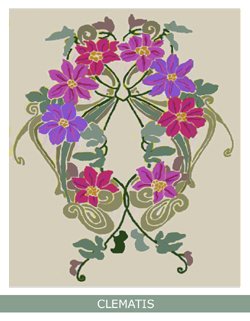
FOUR MORE
FRENCH COUNTRY DESIGNS
FOR
OR
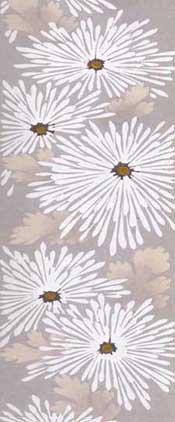
MORE!

NEW!

NEW!

NEW!
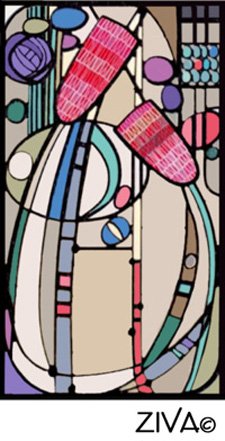
NEW!
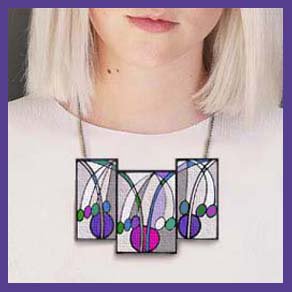
NEW!
INSPIRED BY MACKINTOSH!
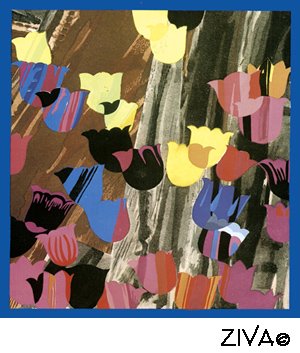
NEW!

NEW!
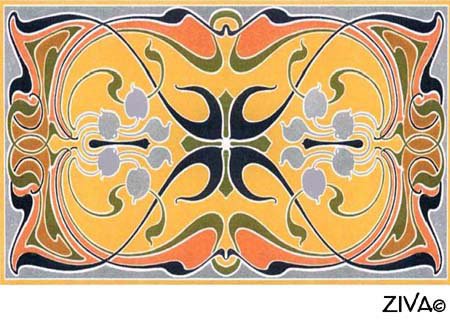
MORE

MORE
STAINED GLASS CUSHION PATTERNS

NEW!
FOR CHRISTMAS STOCKING!

NEW!
INSPIRED BY PICASSO!

FOR A COIN PURSE OR CARD HOLDER
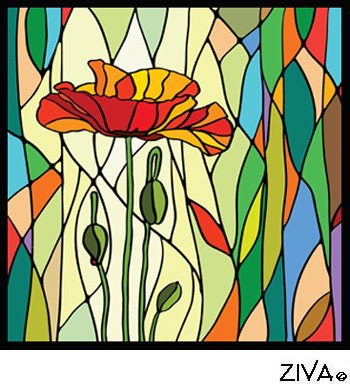
NEW!
FOR CUSHIONS

FOR LOTS OF MAKING UP IDEAS!
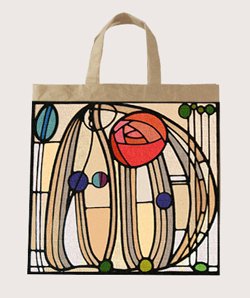
FOR TOTE BAGS OR HANDBAGS

FOR NEEDLEPOINT ART

IN THE PRAIRIE STYLE!

INSPIRED BY
MATISSE!
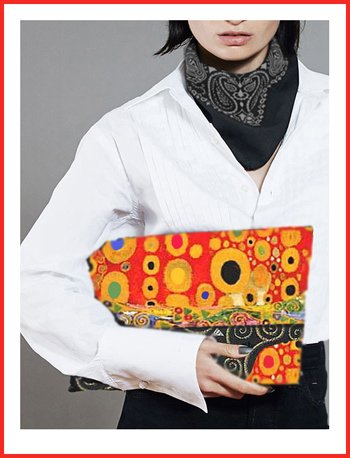
INSPIRED BY
GUSTAV KLIMT!
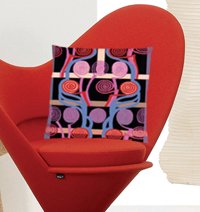
INSPIRED BY
MACKINTOSH!

CUSHION DESIGNS
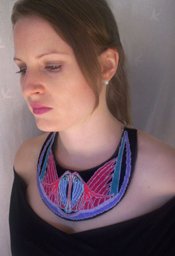

'MY FRENCH COUNTRY' SERIES
